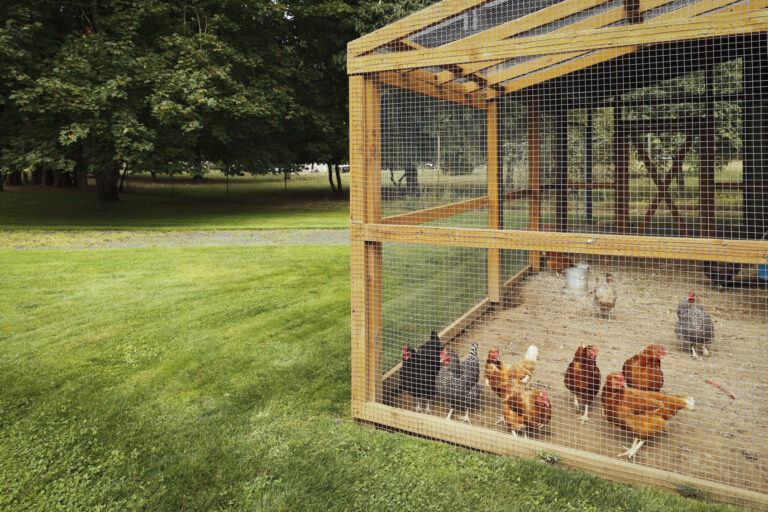The busy city life has become too overwhelming for many individuals. For that reason, many young people are turning to farms and villages to reduce stress and keep on living peacefully. With that, they can care for many farm animals which further contributes to more sustainable living.
As one of the easiest animals to take care of as a young farmer, chickens have become a staple on every farm. Besides eggs and meat, they make your soil fertilized, and can be fed leftovers to decrease waste further.
However, like any other animal, they have their necessities that have to be fulfilled. To help you understand the equipment needed for your hens, we made this article. Keep reading, and find out what are the essential pieces of equipment to ensure the happiness, health, and safety of your hens.
1. Proper coop
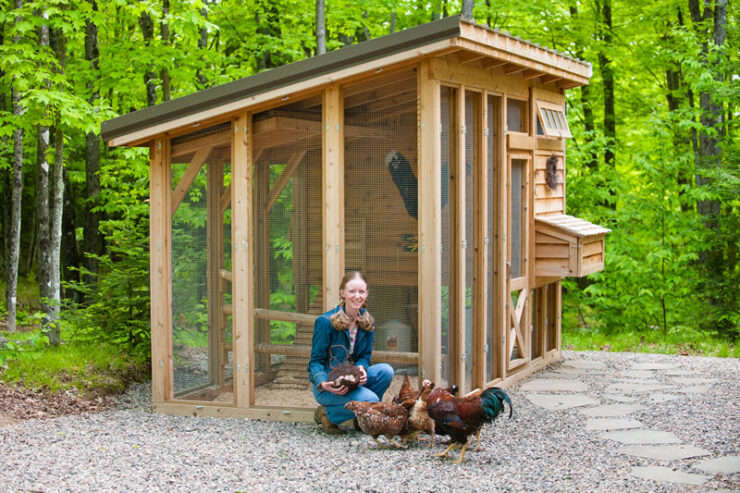
To ensure the safety of your hens, you have to understand the type of shelter they need. However, everything is dependent on the number of chickens you plan on keeping. For that reason, it is always better to invest in a large coop. Prices for these larger coops ranges between $500 and up to $1000 as we can see at https://aivituvin.com/collections/chicken-coop
At first, your chickens will enjoy the large space, and will slowly begin to accommodate less space as your peep keeps on growing.
Although you might pass with a basic indoor shelter, there are many coops that you can choose from. With coops that have both indoor and outdoor spaces, you will save time on letting your hens go out. In addition, they come integrated with nest boxes, as well as roosts that are high enough for your hens.
2. Watering unit
Getting your chickens well-nourished and hydrated is essential for their health. For that reason, you have to invest in a watering unit. Although you can pass with just a bowl that is elevated enough to prevent accidental spillage and knocking, it is better to get a proper watering unit.
Because most watering units are automatic, you will not have to worry about whether the chickens have enough water.
Just be sure that the water is clean, and that the unit is not broken. For that reason, it is always better to have two or more watering units, since if one of them malfunctions, the others will compensate.
3. Feeding unit
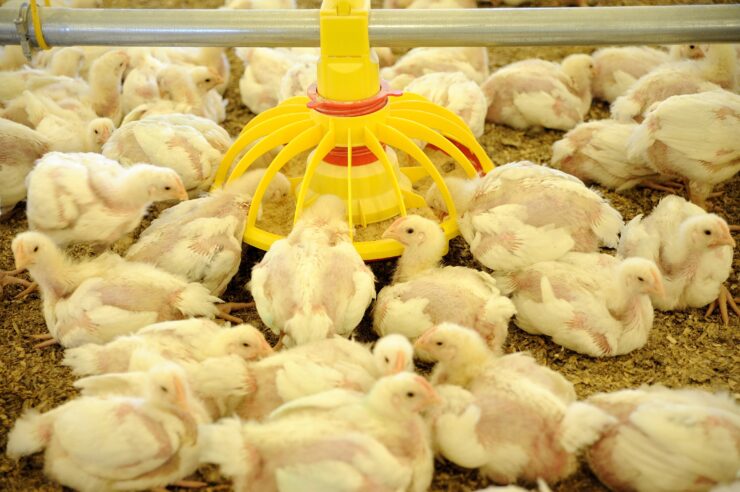
Just like the water, keeping your hens fed is essential for their well-being. For that reason, investing in a feeding unit is the right way to ensure enough food for all your chicken.
They can be automatic, or can simply work with the help of the gravitation where the food falls down to the containers when they get empty.
You will only need to be sure that the food is safe for your hens. This means proper positioning, to prevent getting it wet from the watering unit, as well as any dirt from the ground. In addition, be sure to have enough food for every chicken, because a battle for food is not something you want to cause.
4. Nesting area
Every chicken requires a safe space to be comfortable when laying its eggs. For that reason, your coop must be equipped with enough nest boxes. Not only do they stimulate the hens to get inside and be comfortable, but they make collecting the eggs an easier process for yourself.
You don’t need to overcomplicate the boxes, just ensure they are clean and covered. Insert bedding to make the hen comfortable, or if you want to step up nesting pads are the way to go.
The usual rule is to have at least one box for every five chickens. However, you need to observe their habits and prevent overcrowding. That leads to fewer eggs and a frustrated flock, so you must prevent that situation.
5. Heat control unit
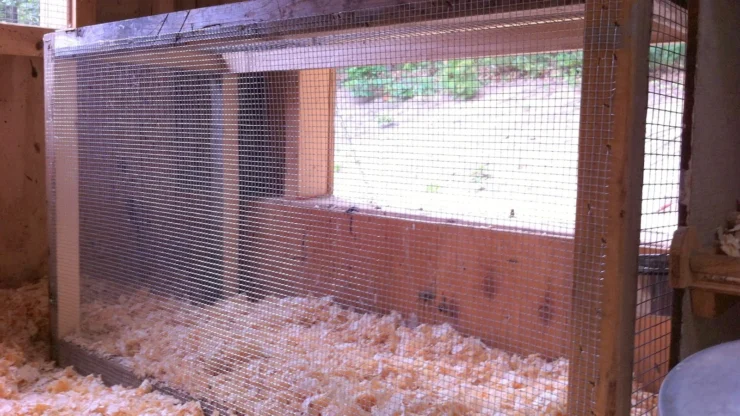
Depending on where you live, the temperature changes can impact the health of your hens. Although they are pretty strong birds and can adapt to the temperature nicely, you should still pay attention to the temperatures.
In case you plan on increasing the flock with young chicks, controlling the heat will be essential. For that reason, you should go for coops that have great isolation. That prevents moisture and winds to enter the shelter.
In addition, going for a heat control unit with a lamp and a thermometer will surely help in providing optimal conditions for your peep.
6. Proper ventilation
With the biological processes, every animal leaves waste materials such as feces and urine. With time, they can collect and let out the ammonia that can cause damage to your flock. The signs of a coop with bad ventilation are constant lung problems of your hens, as well as irritation of the mucosa and eyes.
Although you will get everything cleaned by replacing their bedding, having proper ventilation inside the coop is essential. For that reason, you should consider either creating proper airflow or investing in ventilator units. Just be sure to cover the ventilators to prevent your chickens from coming close and hurting themselves.
7. Roost
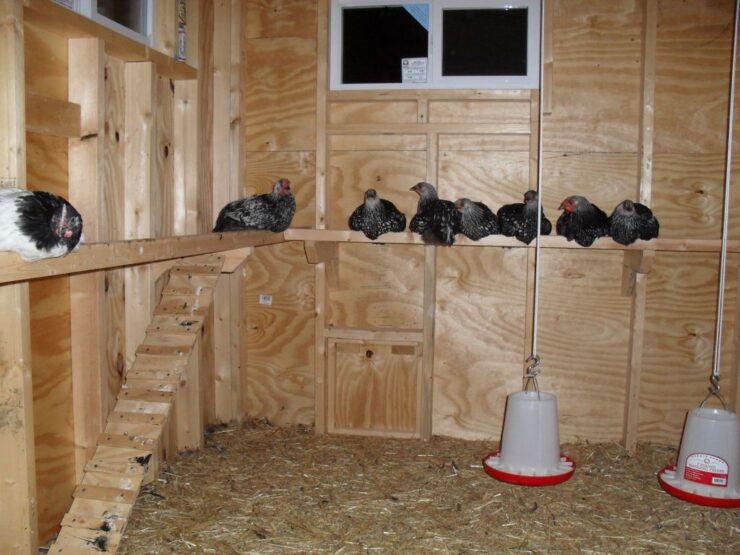
You have surely seen how chickens like to climb somewhere high. While they usually do that on threes or get on the roof of your house, you should do your best in investing in roosting places. Not only do you satisfy their instincts to protect themselves, but you also ensure they are healthy and free of microorganisms from dirty floors.
Be sure to have enough roosting rods for every hen, and keep them clean. That will prevent battles over a sleeping area and will create safe and comfortable conditions for every chicken you own.
8. Place for running
Like any other animal, your hen peep needs enough place for their activities. For that reason, you have to find enough space to let them run and be active throughout the day. They need entertainment, so scratching and playing around the yard are essential processes for their health.
For that reason, going with a coop with a place where the chickens can run around is something you should consider. Just be sure to cover that area so you can prevent any predators from causing harm to your flock.
Besides going over the edges, consider digging the lower portions of the fence at least a couple of centimeters in the ground to prevent predators from crawling inside the cage. This makes their living area secure which makes you sure about their safety and well-being.

